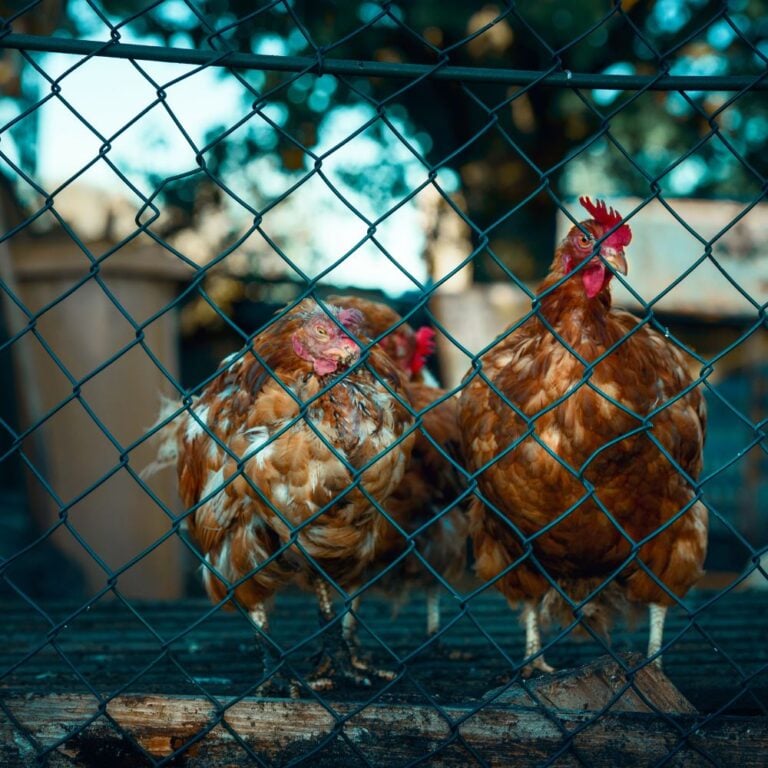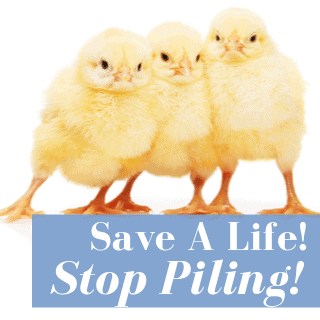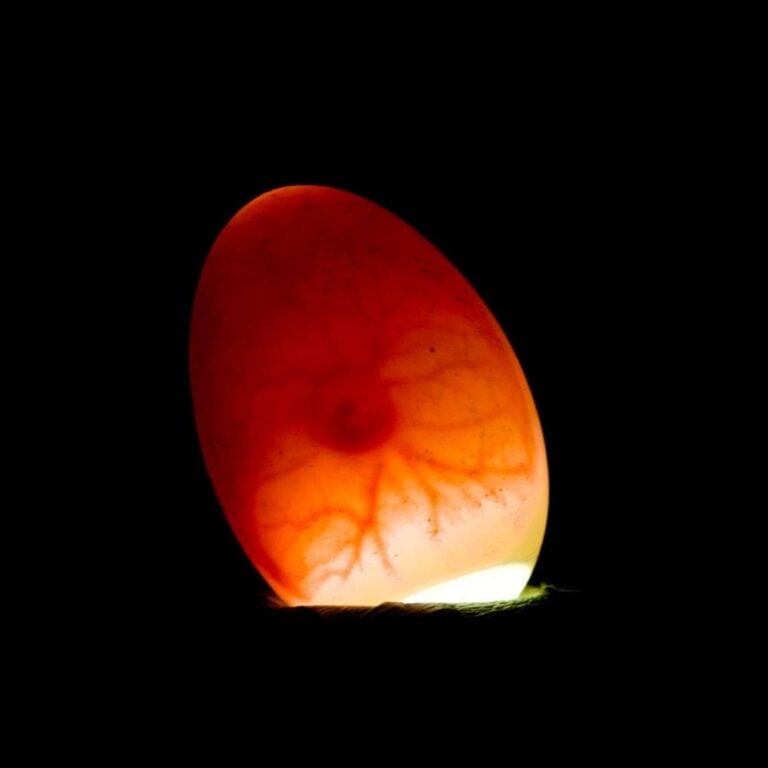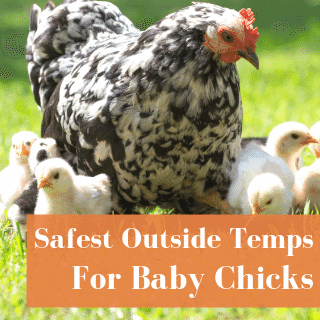Why doesn’t every incubated egg hatch?
It can be so disappointing. You’ve just nurtured your clutch of a dozen or two eggs for nearly 3 weeks, but then, on hatch day, not all of your eggs have hatched.
Despite your best efforts, it breaks your heart, and you can’t help but second-guess your decision to raise chicks.
While it’s impossible to truly know the exact reason, there are many factors that can result in a less than stellar hatch rate.
In this article, you’ll discover a “checklist” of reasons – and you can use them to determine where you might have gone wrong.
Today, I’ll provide some insight into the question “Why doesn’t every incubated egg hatch?”
A short list of why every incubated egg doesn’t hatch:
- Wrong Temperature and/or Humidity
- Chicks Run out of Air
- Chicks Run out of Energy
- There’s a Genetic Issue
- Wrong Position to Pip
- “Shrink wrapping”
- Hatched Chicks Cause Trauma
Table of Contents (Quickly Jump To Information)
Unhatched Eggs Are Very Common
Whether you incubated eggs in an incubator or they’re hatched by a hen, it’s really common to lose some chicks before they enter the world.
A lot of owners get upset when this happens, and think that they did something wrong. While it’s possible you influenced a poor hatch rate, a lot of times, you probably didn’t.
Many times, eggs don’t hatch due to factors outside your control.
So, if you get a poor hatch rate, don’t beat yourself up. Just look at the reasons we discuss below, and see if any of them might be relevant to your most recent hatch.
Wrong Temperature/Humidity
The first reason could be that the conditions inside the incubator or under the hen weren’t ideal. This comes down to temperature and humidity.
It takes about 21 days for eggs to hatch. When you incubate eggs, or when a hen hatches chicks, the eggs need a fairly consistent temperature of 99.5 degrees Fahrenheit (37.5 degrees Celsius) and a humidity level of around 50%. It’s ok to have slightly less humidity during the first 18 days of incubation and a slightly higher degree of humidity during the last three or four days of incubation (ideally, 50% to 60% humidity).
The first 18 days, you should turn your eggs three of three or five times a day – odd numbers of turns.
Then the last three to four days, until they actually hatch, they have to just sit in one place. This helps the chick prepare itself for birth. During this time, you need that consistent temperature and humidity levels to be hatched.
When a large portion of the eggs don’t hatch, it’s sometimes because the temperature isn’t consistent or correct. In most incubators, a temperature remains constant, especially if you use something like an automatic forced air incubator.
So, if you know your incubator temperature is spot on, then more likely, the humidity isn’t correct.
Chicks Run out of Air
It’s something that’s more common than people realize: When inside the egg, chicks can run out of air during the last day or two of incubation.
When the chick is starting to hatch, it twists itself into position to peck through the egg and pip and zip. It has to pip through the inner membrane before it starts to pip out of the eggshell.
During this time, it can run out of oxygen. There’s only a set amount of oxygen in the egg and it can run out of air while it’s trying to hatch. This is fairly common.
In these cases, if you know that it’s alive, but it’s not going well (if chirping gets fainter, or it’s been a day or so and the chick still hasn’t broken out of the shell) – it’s not getting enough air or the hatching isn’t going well, you’re not sure why – you can always try drilling a hole into that air cell.
It’s probably something only an experienced professional should do, but it is an option if you think that you know there’s not going to be enough air for your chicken.
Chicks Run Out of Energy
In a same sort of vein, the chick can run out of energy to be born. When they’re hatching, they have to break through the inner membrane of the shell (pipping), and then they create a break in the shell where they can actually push the eggshell out and enter the world (zipping).
During this process, they sometimes they run out of energy, they can’t finish it, and then they die.
In my experience, this is less common than a temperature or humidity issue, but it can happen, and it probably happens more often than we realize.
There’s a Genetic Issue
Another reason eggs don’t always hatch is because the chicken just isn’t developing normally.
The scenario works like this: The chick makes it to the final few days of the hatch. You do your final candling and you see that it’s in there, it’s moving, it’s alive. But then it never hatches.
That could be due to something as simple as it just didn’t have the right build to be born. Maybe the heart didn’t develop correctly, or maybe the lungs didn’t. Ultimately, some part of the bird just didn’t develop correctly and in a final few days, when they had to pip free, they just couldn’t because the body just wouldn’t let it.
Wrong Position to Pip
Chicks sometimes can’t get into the right position to actually break through the inner membrane or the eggshell itself. Quite a few times we’ve autopsied the eggs that didn’t hatch, and we see that the chick never got into the right position.
We’ve also seen chicks that have half-pipped or are struggling to get out of the egg. We help them pick through the outer shell. If we hadn’t done that, the chicken never would have hatched because it wasn’t in the right position to actually break through the eggshell.
There’s really nothing you can do to avoid this.
Shrink Wrapping
Another reason that not all the eggs in a clutch will hatch is because of shrink wrapping. This goes back to the humidity issue.
Shrink wrapping is when the inner membrane gets stuck to the chick, and because of this, the chick can’t move.
Usually, the chick starts to break through the shell, but a sudden humidity drop (if you open the incubator, for example), causes that inner membrane to dry out, and stick to the down. The chick then can’t move and complete the hatching process.
It’s like if you shrink wrap a piece of meat: the membrane covers the entire piece of meat, and nothing can get in and nothing can get out.
Shrink wrapping can could happen before it pips, during pipping, or after pipping. We’ve actually seen it happen in all three stages. This is tied to the humidity issue because during those last few days, the humidity level in the incubator should be a higher: 50 to 60%.
Hatched Chicks Cause Trauma
This isn’t something a lot of chicken owners talk about, but I’ve found it to be pretty common.
After hatching, newborn chicks jostle and roll the other eggs so much, that they break the unhatched egg.
Why does this happen? Well, newborn chicks can’t walk very well, and they’re freaked out because they just entered the world and don’t know what’s going on. They hear noises, everything they see is new, and they’re very, very confused – so they flop everywhere.
All this flopping around cracks the unhatched eggs, which causes trauma to the embryo that’s in there. The embryo then dies, and never hatches.
While it’s never clear WHY a chick doesn’t hatch, if you see that there’s cracked eggs with fully developed (but dead) chicks inside, then it’s possible all the jostling from other chicks contributed to it.
I hope this article answers the question “why doesn’t every incubated egg hatch.” So, the next time your clutch doesn’t have a 100% hatch rate, you can look at this list, and maybe narrow it down to a single reason.
Maat van Uitert is a backyard chicken and sustainable living expert. She is also the author of Chickens: Naturally Raising A Sustainable Flock, which was a best seller in it’s Amazon category. Maat has been featured on NBC, CBS, AOL Finance, Community Chickens, the Huffington Post, Chickens magazine, Backyard Poultry, and Countryside Magazine. She lives on her farm in Southeast Missouri with her husband, two children, and about a million chickens and ducks. You can follow Maat on Facebook here and Instagram here.

![Help Chicks Transform Into Healthy Pullets With These Pro Tips [Podcast]](https://thefrugalchicken.com/wp-content/uploads/2016/05/chicks-turning-into-pullets-min.jpg)

![6 Questions To Ask Before Getting Chickens [Podcast]](https://thefrugalchicken.com/wp-content/uploads/2017/03/6-questions-to-ask-before-getting-chickens-feature.jpg)


